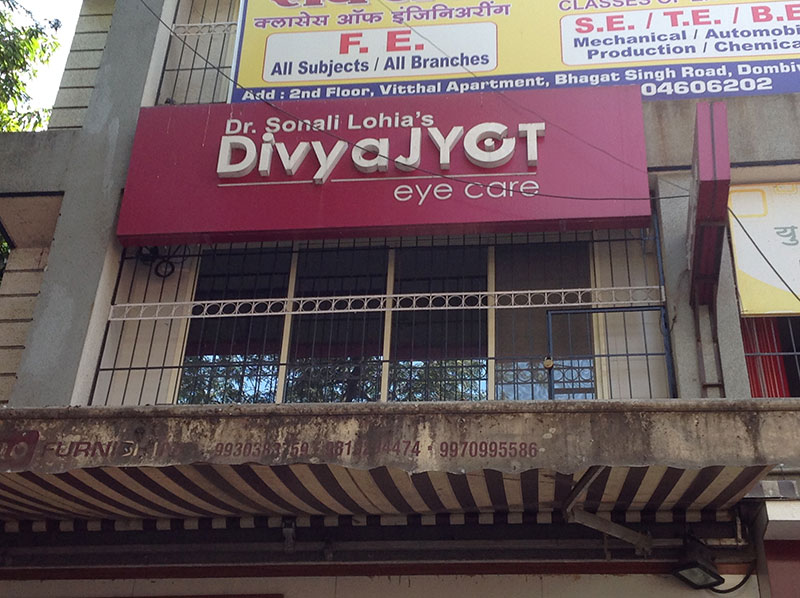One of the most common complaints by patients in our OPDs is eyestrain due to refractive errors. Adults & children alike, all spectacle users face a multiple of problems related to glasses.
Growing children in today′s world undergo tremendous strain due to long hours of reading. If they have an underlying refractive problem, then the eye strain is further accentuated.
There are a number of queries put forward by anxious parents & patients.
When should be the first eye check up for my child? In the growing years, the child should be brought for the 1st eye checkup.
- Pre-school age screening around 4 yrs of age to rule out refractive errors.
- Whenever there is an eye related complaint, whatever the age.
- When a squint is noticed by parents, whatever the age.
When should be the first eye check up for my child?
Routinely, a yearly checkup is recommended.
Sometimes, high glass number in only one eye can cause poor vision called amblyopia, which needs early treatment i.e. before 8 years of age.
How often should a child be checked & why?
How often should a child be checked & why?
Routinely, a yearly checkup is recommended. Sometimes, high glass number in only one eye can cause poor vision called amblyopia, which needs early treatment i.e. before 8 years of age.
Will my child′s number always increase?
Many times parents are worried about the constant increase in the power of the glasses of the child. It is normal to see changes in glasses till adolescence or sudden increase due to some illness. In some cases of progressive myopia the power can increase even later.
What can I do to reduce the number of my glass?
There are no exercises or medicines available which can reduce the power of glasses. What is more important is that clear vision is maintained & the glasses are regularly updated. However, one can reduce eyestrain by improving reading & dietary habits.
Is there any different method of checking for small children?
Many a time, kids are unable to express their opinions clearly due to fear or alterations in mood. Since children have strong accommodation, accurate checking needs to be done after dilatation of the pupil, which may even take 2-3 sittings.
How can I take care of my child′s glasses?
In children, spectacles with large round or oval lenses should be ordered; otherwise the child may look over them. It is important that the spectacles fit accurately. It may take some time for children to get adjusted to their glasses. The glasses may need to be regularly tightened since they tend to get loose & he may get headache due to improper centering. Unbreakable variety of glasses is also available.
Should I use my glasses constantly?
Glasses need to be used constantly both for distance & while reading in children unlike adults over 40 where there are bifocals or separate reading glasses.
Will my number reduce if I wear glasses constantly?
It is a false notion that constant wearing of glasses will cause partial/total reduction in the glass number. This may sometimes be seen only in cases where the power is very minor.
Are refractive errors always hereditary?
Hereditary may play an important role in some cases. However it is not necessary that children of parents with high power should have glasses or vice versa.
What care should be taken by high myopes?
In patients with high myopia, there may be certain degenerative changes in the peripheral retina like retinal thinning & lattice, which can lead to sudden blurred blurred vision due to retinal detachment. Hence it is very important to get a detailed retinal checkup by an ophthalmologist regularly once a year.
How will I know if my number has changed/ increased?
Patients with uncorrected refractive errors frequently complain of aching of eyes, headache & early fatigue with reading. Uncorrected myopia leads to poor distant vision.
How can I protect my eyes from strain due to long term computer use?
Even through computer technology has made work easier, it also puts a tremendous strain on our eyes especially with poor working habits.
When we use the computer for a computer for a long time & stare at the screen, our blinking reduces. This causes a relative dryness in the eyes & causes strain. Hence, it is advisable to blink regularly. Also we need to take a 2 minute break after every 1/2 hour of continuous work & either keep our eyes closed or look at a distance. Glasses & computer screens can have antiglare coating on them. The illumination of the screen should match in intensity with that of the immediate surroundings. See that the blast of the room air conditioner is not directed at the eyes. Use lubricating drops of required.
Are bifocals better or worse than separate reading glasses?
Adults above 40 usually start requiring separate glasses for reading due to weakening of the lens ligaments. Usually, bifocal glasses are prescribed. However since bifocal glasses have a demarcation line in the centre, many first time users have difficulty adjusting to it. As they look through the lower segment, the ground seems higher & they tend to fall especially while climbing up and down stairs. Computer users also experience discomfort as they need to lift their chin up to see through the near glass. Long term use cause neck strain. Many patients hence prefer 2 separate glasses for near & distance rather than bifocals. Nowdays, varilux glasses are available where there is no demarcation line.
What care should I take while changing glasses?
Care should be taken to select frames suitable to the eyes in shape & size. Sudden significant changes in the size the frames or the type of bifocals can cause severe eye strain.
What should I do if there is a frequent change in glasses?
Frequent changes in the power of glasses may be indicate of some underlying disorders like glaucoma & cataract & should be thoroughly examined by an experienced Ophthalmologist.
Attention Computer User
10 Commandants
To Avoid Computer Vision Syndrome(C.V.S.)
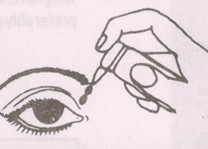
Eye to Screen Distance
Keep at least 25 Inches Distance Preferably
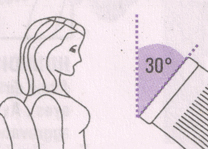
Monitor Tilt
Keep top of the monitor slightly farther from the eyes than the bottom of the monitor.

Screen Colours
Use dark letters on light background.
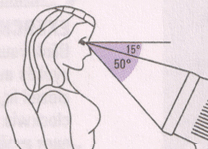
Vertical Location
Ensure that viewing area of the monitor is between 150 and 500 below Horizontal eye level.

Lighting
Have ceiling suspended indirect lighting. Use blinds, Shades, & Curtains to control outside light & Avoid reflection.

Neck Posture
Always Use chair with arms. Note that flexion (head-tit pose) causes less fatigue than head posture.

Humidity & Airflow
Avoid direct flow or draft of air on your eyes Avoid low humidity of fumes as it aggravates dry dye condition.

Break
Take a short visual break every 20 minutes to avoid strain.
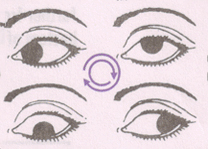
Exercise
Blink your eyes few times. Close eyelids and roll the eyes behind your closed lids once anti ¬ clockwise. Take a deep breath & open eyes while releasing breath.
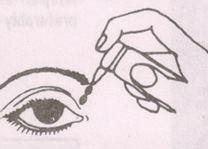
Doctor′s Advice
Follow your doctor′s advice & use lubricating eye drops as advised.



